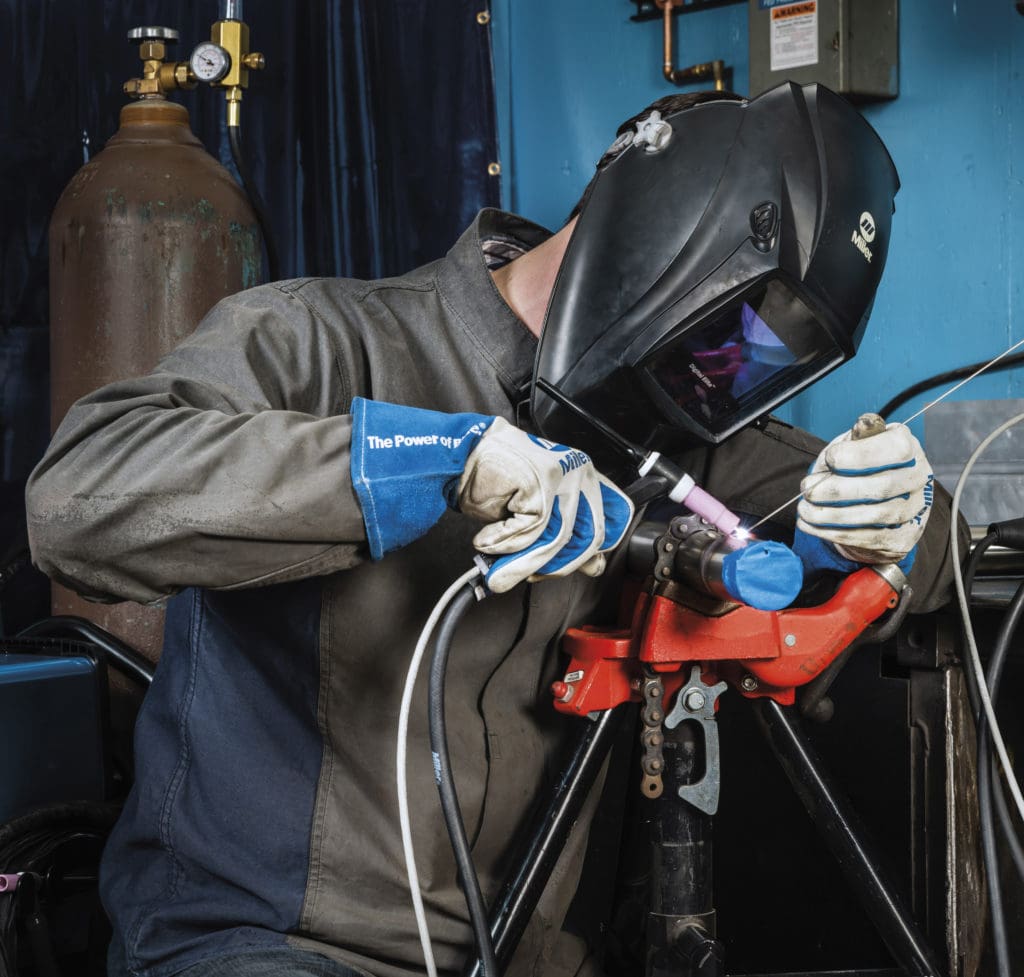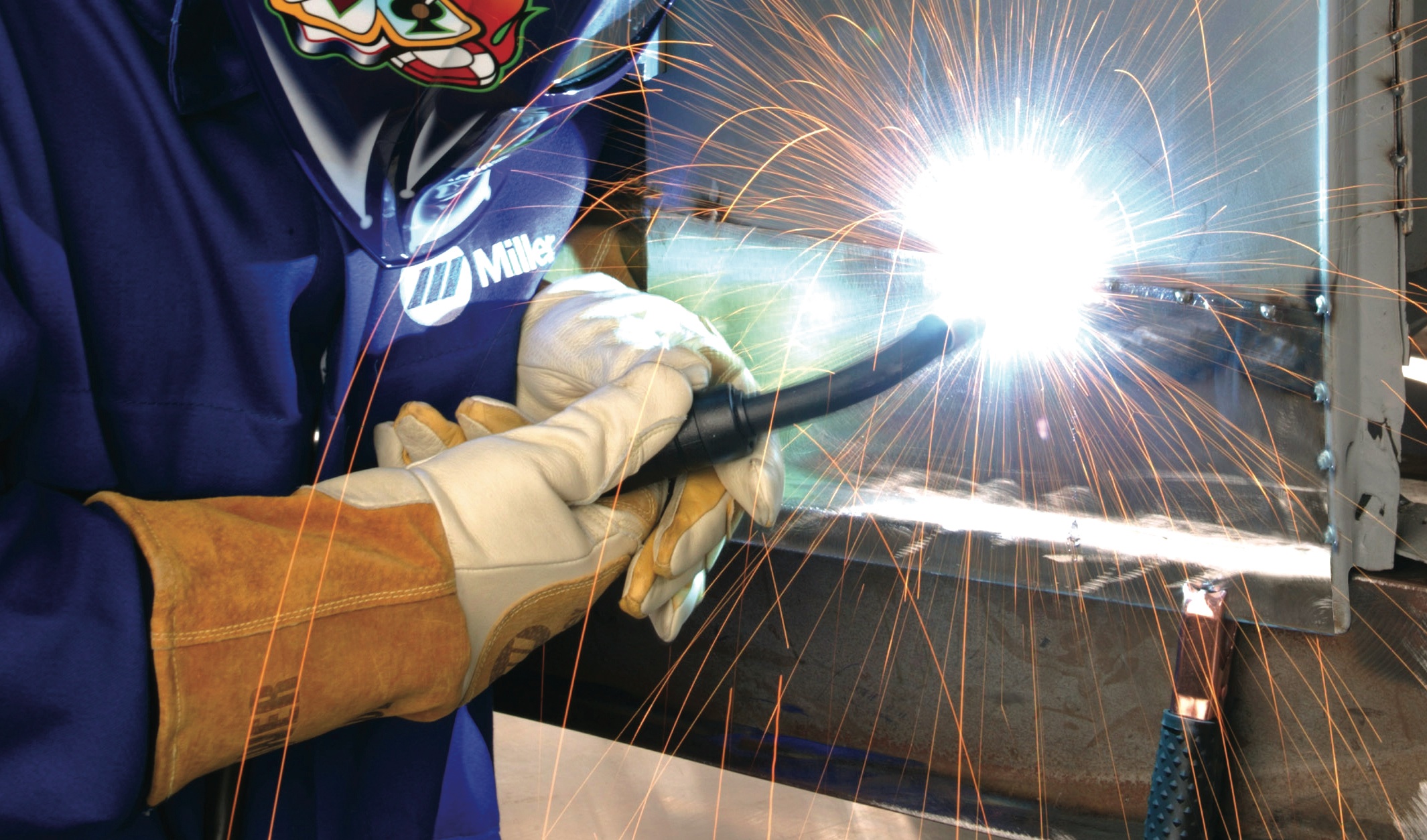Welding Stainless Steel: Understanding the Alloys and Choosing Filler Metal
When a component must withstand corrosion and extreme temperatures — as low as minus 100 degrees Fahrenheit and as high as 1,800 degrees Fahrenheit — manufacturers often turn to stainless steel. While it’s commonly used in manufacturing, welding stainless steel can present some specific challenges. Keeping the heat input low is critical to success in welding the material since it is less conductive to heat.
Understanding the common types
It is also important to select the right alloy and filler metal for stainless steel welding applications, and there are many factors to consider when making these choices. Follow some key best practices to help optimize results.

There are five commonly used grades of stainless steel. Understanding the differences between the types helps ensure the right one is being used.
Across all five types, chromium and nickel are the main alloys in the material to varying degrees. Three of the most common types — austenitic, ferritic and martensitic — are phases of stainless steel. As the material cools, the result will be one of these types or a combination of types, depending on how the metal is cooled and what temperature it reaches during cooling.
The five types all have similar weldability. Because they are all highly alloyed, sluggishness of the weld pool is a common challenge. Using electrodes with boosted silicon content can help address this. The types do vary in strength. If the material classification has an L-grade, such as 308L, this designates a lower carbon level, which can mean slightly lower tensile strength.
Choosing the right filler metal for each type of stainless steel depends on the characteristics of the base material, the properties required for the finished weld and the environment the weld will be exposed to.
Austenitic: This type of stainless steel has chromium content ranging from 16 to 25 percent and nickel content from 8 to 20 percent. Additional alloying elements often include silicon, manganese, nitrogen and molybdenum. Austenitic stainless steels do well in highly corrosive environments and are commonly used for medical equipment and kitchen equipment such as mixers and dishwashers. The most common austenitic steels are 304, 308, 309 and 316. For 304 and 308, a 308 filler metal can be used. For a 309 base material, there are numerous options, including 308, 309 or 316 filler metals. For 316 base materials, it’s recommended to use a 316 filler metal. Pre-heat and post-weld heat requirements aren’t typically an issue with austenitic stainless steels. If there is a need to do post-weld heat treat, avoid the temperature range of 1,200 degrees to 1,650 degrees Fahrenheit, as carbide formation will occur rapidly in this range and cause weld embrittlement.
Ferritic: These stainless steels have a chromium content that can range from 10.5 percent to greater than 25 percent and typically have the best corrosion resistance. With tensile strengths of 55 to 65 ksi, they generally aren’t as strong as austenitic and martensitic stainless steels. Ferritic stainless steels are often found in automotive exhaust systems, chemical processing, and pulp and paper industries. Common grades are 409 and 430, with matching filler metals of 409 and 430. Ferritic base materials are generally limited to service temperatures below 750 degrees Fahrenheit due to the tendency to form embrittling phases. Weld solidification cracking can also be an issue with ferritic base materials, so it’s important to use a filler metal with stabilizing alloys such as titanium or niobium, which help lower solidification cracking susceptibility.
Martensitic: These stainless steels provide a good combination of high tensile strength and corrosion resistance and are commonly used for steam and gas pipes, turbine blades and other applications that may encounter steam and moisture buildup. Keep in mind that materials with high tensile strength tend to have lower ductility. Martensitic stainless steels typically have an 11.5 to 18 percent chromium range and higher levels of carbon and other alloying elements that promote the formation of martensite. Common martensitic stainless steels are 410 and 420, which can be matched with 410 and 420 filler metals with similar characteristics. These alloys are also susceptible to hydrogen-induced cracking. This risk can be reduced by controlling the heat input through proper pre-heat, interpass and post-weld temperature requirements or by reducing the amount of restraint on the weld. A post-weld heat treatment can be used on these types of stainless steels to temper the martensite that is formed, which will impact the hardness, tensile strength and ductility of the weld.
Precipitation hardening (PH): These stainless steels are typically alloyed with various elements and go through heat treatments to obtain their strength and hardness. Some grades of PH stainless steels can have strengths over 200 ksi, making them the strongest type of stainless steel. A common PH stainless steel is 17-4, which is often used in applications where high strength and corrosion resistance are needed. Applications include missile launch tubes, aircraft frames and high-pressure gas bottles. This type can be matched with a 17-4 PH filler metal or 630 filler metal. Because it goes through a controlled cooling to achieve its properties, it’s recommended to bring a 17-4 PH stainless steel up to a solution-treated condition before welding. This temperature is usually within the range of 1,650 to 1,800 degrees Fahrenheit for one to two hours, followed by a quench. Post-weld heat treating can be used to bring the material back to the desired properties after welding. It is recommended to contact the supplier of the PH stainless steel to get recommendations on post-weld heating temperatures and times to achieve the desired properties.
Duplex: These alloys are designed to have a microstructure of 50 percent ferrite and 50 percent austenite in their finished form. Duplex stainless steels have a service temperature range of about minus 40 to 535 degrees Fahrenheit and strengths above 60 ksi, which provide a mix of abrasion and corrosion resistance. They are used in a wide range of applications, including oil and gas pipelines. Duplex filler metals are newer to the market and are growing in use.
Best practices
Proper filler metal selection is one key to successfully welding stainless steel. It’s also important to follow some best practices that can help optimize results.
The less fluid, more sluggish weld pool of stainless steel can cause some issues, especially for welders who aren’t as familiar with the material. If the less fluid weld pool is a concern, choose a filler metal with more silicon in the classification, such as ER308LSi versus a standard ER308L filler metal. Increased silicon levels help with weld pool flow and fluidity.
It’s also important when welding stainless steel to use faster travel speeds, which help keep heat input low. A too-slow travel speed increases heat input, which can burn alloying elements out of the metal and impact end-weld properties like strength, ductility and corrosion resistance. While a travel speed of 3 to 8 inches per minute is typical with other materials, welding stainless steel with flux-cored or metal-cored wires calls for travel speeds of 8 to 11 inches per minute.
Consider the final appearance of the weld, as well. A weld bead using flux-cored or metal-cored wires will have a distinct gold color or rainbow sheen. A TIG weld using filler metal or that is autogenously welded should not have this bead appearance.
Avoid contamination of the weld by using a dedicated stainless steel brush to clean stainless welds. Using the same brush to clean stainless steel and mild steel can cause cross-contamination that can result in rust later. Similarly, don’t use a brush for stainless steel to clean aluminum, or vice versa.
Using proper safety gear and personal protective equipment (PPE) is also important when welding stainless steel. Some filler metals produce higher levels of weld fume than others, so it’s important to have proper ventilation or weld fume source capture in place when using them. In some applications the welder may also want to use a helmet equipped with a respirator.
Success with stainless steel
Matching the appropriate filler metal to the type of stainless steel being used in the application helps ensure that the welds maintain corrosion resistance, toughness and mechanical properties. The proper welding process and filler metal can also help control heat input when welding stainless steel.
Keeping these key considerations and best practices in mind when selecting a filler metal and welding stainless steel can help ensure success and optimize results.



